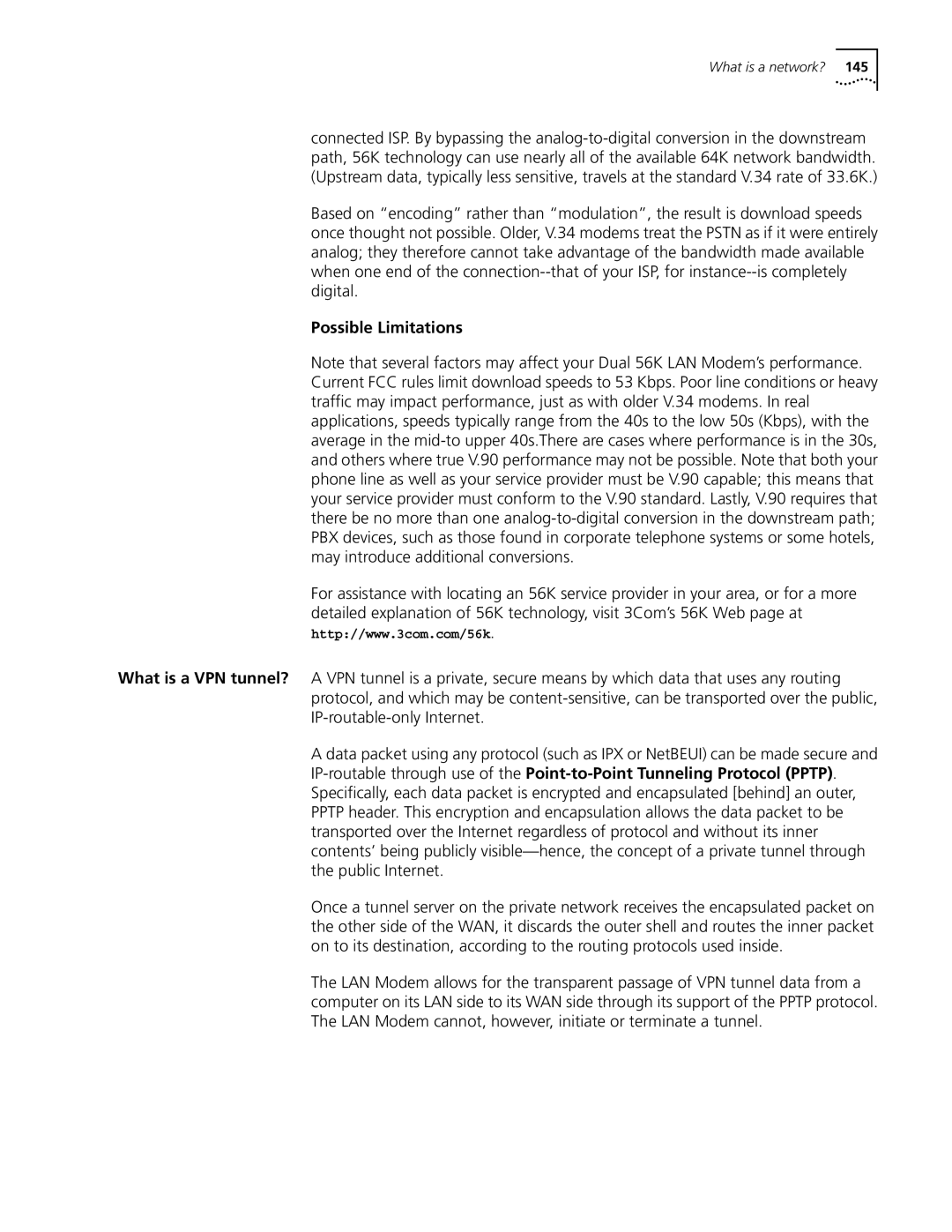What is a network? 145
connected ISP. By bypassing the
Based on “encoding” rather than “modulation”, the result is download speeds once thought not possible. Older, V.34 modems treat the PSTN as if it were entirely analog; they therefore cannot take advantage of the bandwidth made available when one end of the
Possible Limitations
Note that several factors may affect your Dual 56K LAN Modem’s performance. Current FCC rules limit download speeds to 53 Kbps. Poor line conditions or heavy traffic may impact performance, just as with older V.34 modems. In real applications, speeds typically range from the 40s to the low 50s (Kbps), with the average in the
For assistance with locating an 56K service provider in your area, or for a more detailed explanation of 56K technology, visit 3Com’s 56K Web page at http://www.3com.com/56k.
What is a VPN tunnel? A VPN tunnel is a private, secure means by which data that uses any routing protocol, and which may be
A data packet using any protocol (such as IPX or NetBEUI) can be made secure and
Once a tunnel server on the private network receives the encapsulated packet on the other side of the WAN, it discards the outer shell and routes the inner packet on to its destination, according to the routing protocols used inside.
The LAN Modem allows for the transparent passage of VPN tunnel data from a computer on its LAN side to its WAN side through its support of the PPTP protocol. The LAN Modem cannot, however, initiate or terminate a tunnel.
